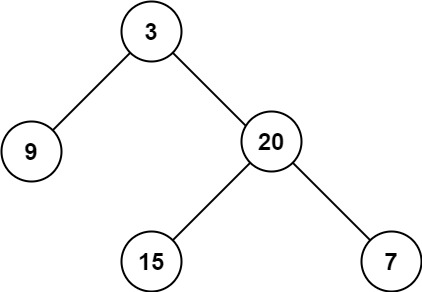Leetcode 0104. Maximum Depth of Binary Tree
Given the `root` of a binary tree, return its maximum depth. A binary tree's maximum depth is the number of nodes along the longest path from the root node down to the farthest leaf node.
Description
Given the root of a binary tree, return its maximum depth.
A binary tree’s maximum depth is the number of nodes along the longest path from the root node down to the farthest leaf node.
Example 1:
Input: root = [3,9,20,null,null,15,7] Output: 3
Example 2:
Input: root = [1,null,2] Output: 2
Constraints:
- The number of nodes in the tree is in the range
[0, 10^4]. -100 <= Node.val <= 100
Solution
1
2
3
4
5
6
7
8
9
10
11
12
13
14
15
16
17
18
19
20
21
22
23
24
25
26
27
28
29
30
31
32
33
34
35
36
37
38
39
40
41
42
43
44
45
46
/**
* Definition for a binary tree node.
* public class TreeNode {
* int val;
* TreeNode left;
* TreeNode right;
* TreeNode() {}
* TreeNode(int val) { this.val = val; }
* TreeNode(int val, TreeNode left, TreeNode right) {
* this.val = val;
* this.left = left;
* this.right = right;
* }
* }
*/
class Solution {
/**
* Iteration
* Time Complexity: BigO(N)
* Space Complexity: BigO(N)
*/
public int maxDepth(TreeNode root) {
if (root == null) return 0;
int max = 0;
Stack<TreeNode> stack = new Stack<>();
Stack<Integer> depth = new Stack<>();
stack.push(root);
depth.push(1);
while(!stack.empty()) {
TreeNode node = stack.pop();
int currDepth = depth.pop();
max = Math.max(currDepth, max);
if (node.left != null) {
stack.push(node.left);
depth.push(currDepth + 1);
}
if (node.right != null) {
stack.push(node.right);
depth.push(currDepth + 1);
}
}
return max;
}
}
This post is licensed under CC BY 4.0 by the author.

